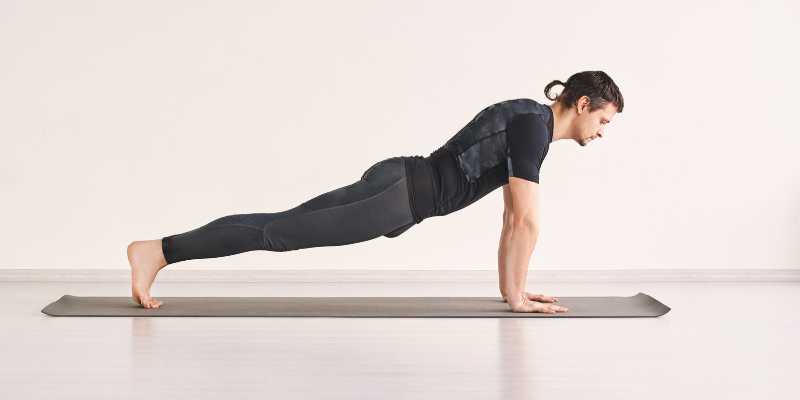Shoulder function can be severely impacted by a subscapularis tear, which can cause discomfort, weakness, and decreased range of motion. Strength, mobility, and general shoulder health may all be restored with specific exercises essential for proper rehabilitation. This article will thoroughly help you recover from a subscapularis tear by outlining efficient workouts. It's crucial to approach your recovery with consideration and commitment, regardless of whether you're an athlete or someone who utilizes your shoulders often. Adding these workouts to your schedule may begin your recovery process right now.
The Subscapularis Muscle: An Overview
- Location: On the underside of the shoulder blade (scapula), the subscapularis muscle is one of the four rotator cuff muscles.
- Function: It permits internal arm rotation and is essential for shoulder stability.
- Causes of Injury: Acute injuries brought on by excessive lifting or falls.
- Persistent Deterioration: This is brought on by repetitive tasks done by overhead.
Symptoms of a Tear in the Subscapularis:
- The front of my shoulder hurts.
- Weakness when the arm is raised or rotated.
- Restricted range of motion, particularly when rotating internally.
- Soreness or swelling in the shoulder region.
- A loud clicking sound when moving the shoulders.
Initial Actions in Rehabilitation:
See a doctor or physical therapist to evaluate your injuries and make sure it is safe to go forward before beginning any workout routine. Reducing pain and inflammation is the primary goal of the first stage of rehabilitation.
- Rest: Avoid activities that make the shoulder hurt so it can recover.
- Ice: Apply ice packs to the shoulder several times a day for 15 to 20 minutes.
- Compression: Use a shoulder brace or an elastic bandage to reduce swelling.
- Elevation: To reduce swelling, keep the shoulder up.
Exercises for Shoulder Rehabilitation:
After seeking expert advice and receiving the all-clear to start rehabilitation, include the following workouts in your daily routine. Always work out slowly and without experiencing any discomfort.
- The Pendulum Stretch:
- Purpose: Reduces stiffness and increases flexibility.
How to Perform:
- Lean forward a little while standing, letting the affected arm hang down.
- Increase the arm's range of motion gradually by swinging it gently in little circles.
- Perform two to three times a day for one to two minutes.
- Internal Rotation of Isometric Shoulders:
- Purpose: The ultimate objective is strengthening the subscapularis muscle without causing joint movement.
How to Perform:
- Maintaining the upper arm close to your body, stand with your elbow bent at a 90-degree angle.
- Press your hand against a wall or door frame for five to ten seconds.
- Repeat two to three times a day while relaxing for ten to fifteen repetitions.
- External Rotation with Resistance Band:
- Purpose: Strengthens the rotator cuff muscles, especially the teres minor and infraspinatus.
How to Perform:
- Affix a waist-high resistance band to a doorknob or other stable item.
- Hold the band with the elbow bent at a 90-degree angle while standing with the injured side facing the band.
- Keeping the elbow near your side, pull the band away from your body.
- Do ten to fifteen repetitions two to three times each week.
- Push-Ups on the Wall:
- Purpose: Reduces strain while increasing total shoulder strength.
How to Perform:
- Place your hands shoulder-height on the wall while facing it.
- Maintaining a shoulder-width distance between your feet, take a little step back.
- Lower your chest toward the wall by bending your elbows, then push yourself back to the beginning position.
- Do ten to fifteen repetitions two to three times each week.

- T-Pull:
- Purpose: Strengthens the muscles in the shoulders and upper back.
How to Perform:
- At chest height, fasten a resistance band to a strong base.
- Hold the band with both hands and place your feet shoulder-width apart.
- Squeeze your shoulder blades together as you pull the band out to the sides and form a "T" with your arms.
- After a little holding period, gradually return to the beginning position.
- Do ten to fifteen repetitions two to three times each week.

- The Flexion of the Shoulders:
- Purpose: Increased shoulder mobility is the goal.
How to Perform:
- Keep your arm at your side as you sit or stand.
- Lift your arm to shoulder height in front of you.
- After a few seconds of holding, let it drop back down.
- Do ten to fifteen repetitions two to three times each week.
- Shoulder Abduction:
- Purpose: Increases shoulder range of motion and strength.
How to Perform:
- Keep your arm at your side as you sit or stand.
- Raise your arm shoulder-high and straight out to the side.
- After a few seconds of holding, let it drop back down.
- Do ten to fifteen repetitions two to three times each week.
- Retraction of the Scapula:
- Purpose: Enhances posture and shoulder stability.
How to Perform:
- Keep your arms by your sides as you sit or stand.
- For five seconds, squeeze your shoulder blades together.
- Repeat two to three times a week for ten to fifteen repetitions while relaxing.
Guidelines for Exercise Progression:
- Pay Attention to Your Body: If a workout makes you uncomfortable, stop immediately and speak with your therapist.
- Gradual Increase: Begin with fewer repetitions and less resistance, then progressively increase as tolerated.
- The Key Is Consistency: Try to do these exercises regularly for the best recovery.
Lifestyle Considerations for Recovery:
To aid with your shoulder recovery, think about adding the following lifestyle modifications in addition to these exercises:
- Environmental Adjustments: Make changes to the workspace to encourage proper posture and lessen shoulder pain.
- Warm-Up and Cool-Down: Always do a warm-up before an exercise session and a cool-down afterward to avoid injuries.
- Hydration: Maintain adequate hydration to promote muscular and general health.
- Nutrition: To aid recovery, include anti-inflammatory foods such as fruits, vegetables, nuts, and fatty fish.
Conclusion
A dedicated strategy to exercise and self-care is necessary to recover a subscapularis tear. You may gradually regain shoulder strength and mobility by including the exercises below in your routine. Remember that patience and consistency are essential components of the healing process. Never be afraid to get expert advice to customize a rehabilitation strategy to meet your unique requirements.













